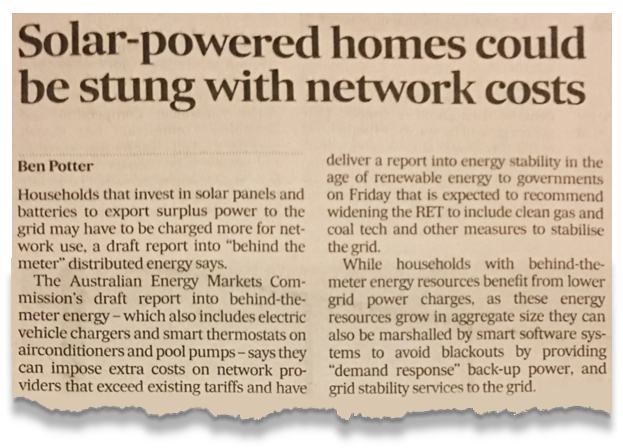The Sun Tax: What does it mean for solar batteries?
- Juliet Huang
- Feb 18, 2022
- 3 min read

Img credits: https://www.solarcitizens.org.au/sun_tax
In 2021, news that the Australian Energy Market Commission (AEMC) will allow electricity companies to charge rooftop solar owners for exporting power to the grid put rain clouds in many solar owners' plans.
Although these changes will take some time to come into place, the widespread concern is entirely understandable. Rooftop photovoltaic(PV) energy is the shining star of Australia's climate and energy policies, and any change will ripple across the country. If you are a solar energy user and worried about the changes, this article takes you through understanding what you can do.
What is a sun tax?
The 'sun tax' is solar tariffs imposed to reduce grid congestion and pay for upgrades. In 2021, the AEMC explained that the solar export tariff would work as a "two-way" pricing system to ultimately reduce "traffic jams" on the grid with power flowing to and from consumers. This move will allow networks to tailor their pricing mechanisms to ensure investment in parts of the grid where needed.
The AMEC has proposed in its final determination that the sun tax is optional and should only be charged where there is high demand for electricity and over-capacity of generation. It also only applies to the National Energy Market(NEM).
What's the problem with the sun tax?
While each state and territory details plans for export charging in the future, solar homes and businesses may be penalised for using solar energy.
Many feel that this is an unfair tax. The data suggests that Australia leads the world in rooftop solar panel installations. Other reports also indicate that around 20% of all grid-connected customers can sell excess electricity into the grid. By 2030, the nation's small-scale solar generating capacity is expected to triple.
On the other hand, many feel that Australia has offered limited subsidies for other green initiatives. Instead, some perceive the sun tax as a slap on the wrist for using solar energy.
With the proposed measures, the figures suggest that a household PV installation of around 4−6 kW, currently earning about $970pa on average, would incur an AUD 70pa charge.
Smaller systems of around 2-4 kW that earn an average of about $645pa may get around $30 less, on average, from their exports.
These predicted changes will not come so soon; distribution networks in each state will need to submit new plans for determinations by the Australian Energy Regulator. The next renewal of these policies happens on an individual state-by-state basis – with the states' renewals occurring between 2024-2026.
While still a few years away, the suggested measures are enough to upset many Australians, as evident by some of the online petitions.
Who benefits?
Right now, the networks themselves are in various stages of trials and stakeholder consultations to design two way (consumption and export) tariffs from overnight to the middle of the day. These need to be submitted to the regulator at the end of February.
Early tariff trials have shown that solar exports reward battery owners in the evening peaks.
Home battery owners will benefit by keeping surplus energy and avoiding high network and retail consumption in the evening. If they choose to keep it till the evening to sell back to the grid, electricity companies might reward them with a substantial network rebate.
Benn Barr, the AEMEC commission's chief executive, has said himself that the new proposed sun tax helps to incentivise small-time solar energy users and "make it worthwhile for them to install batteries."
Therefore, with the sun tax looming in the future, it will be a bright idea to opt for solar home batteries.
Conclusion
If you're thinking of buying a solar home battery because of the sun tax, this is a good time to consider the LG RESU HOME.
If you are interested in hearing more about solar energy for your home and receiving a quote for an LG RESU or an LG RESU HOME, head on over to our quote form, and one of our certified installers will get in touch shortly.





![[Better Life Story] The Start of a New Journey: Making the World Better Together](https://static.wixstatic.com/media/3a5806_43d8f0d0ada246229aa771449e241dc1~mv2.png/v1/fill/w_565,h_240,al_c,q_85,enc_avif,quality_auto/3a5806_43d8f0d0ada246229aa771449e241dc1~mv2.png)


Comments